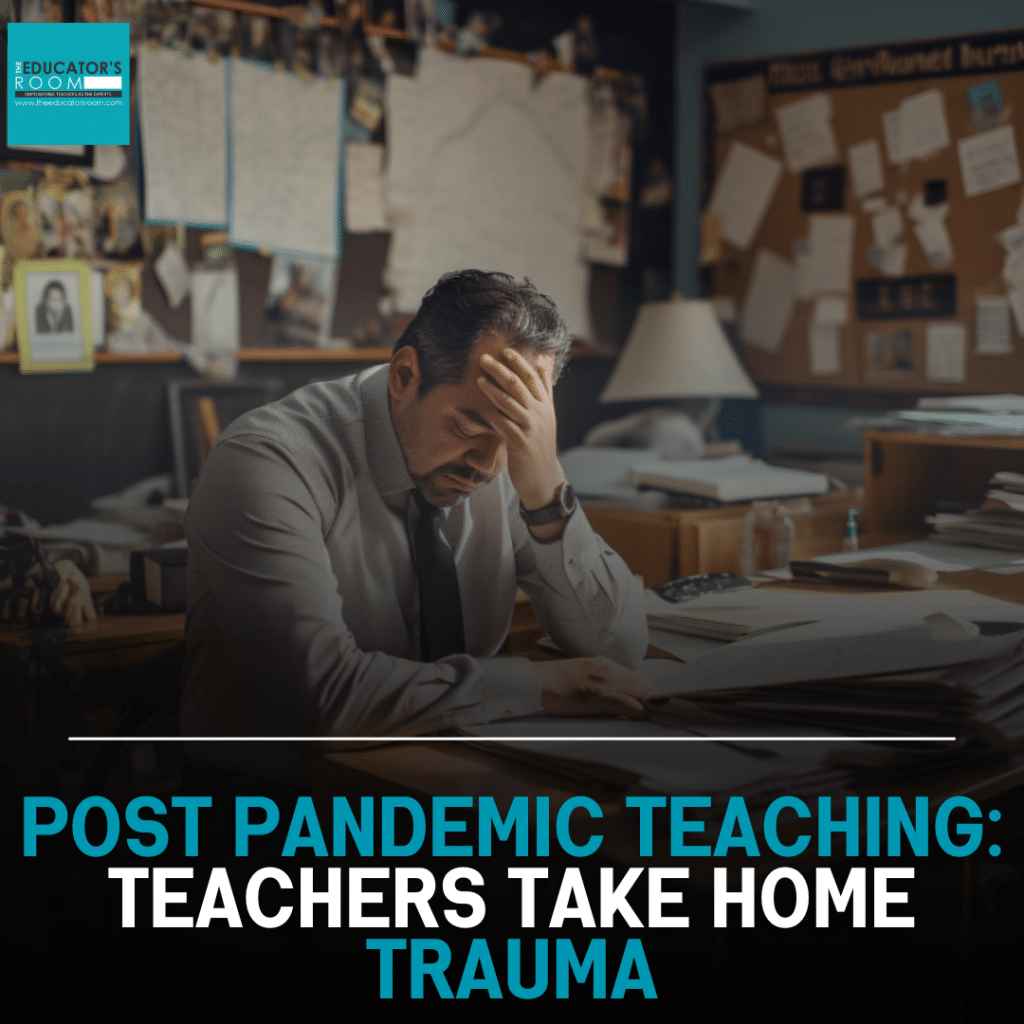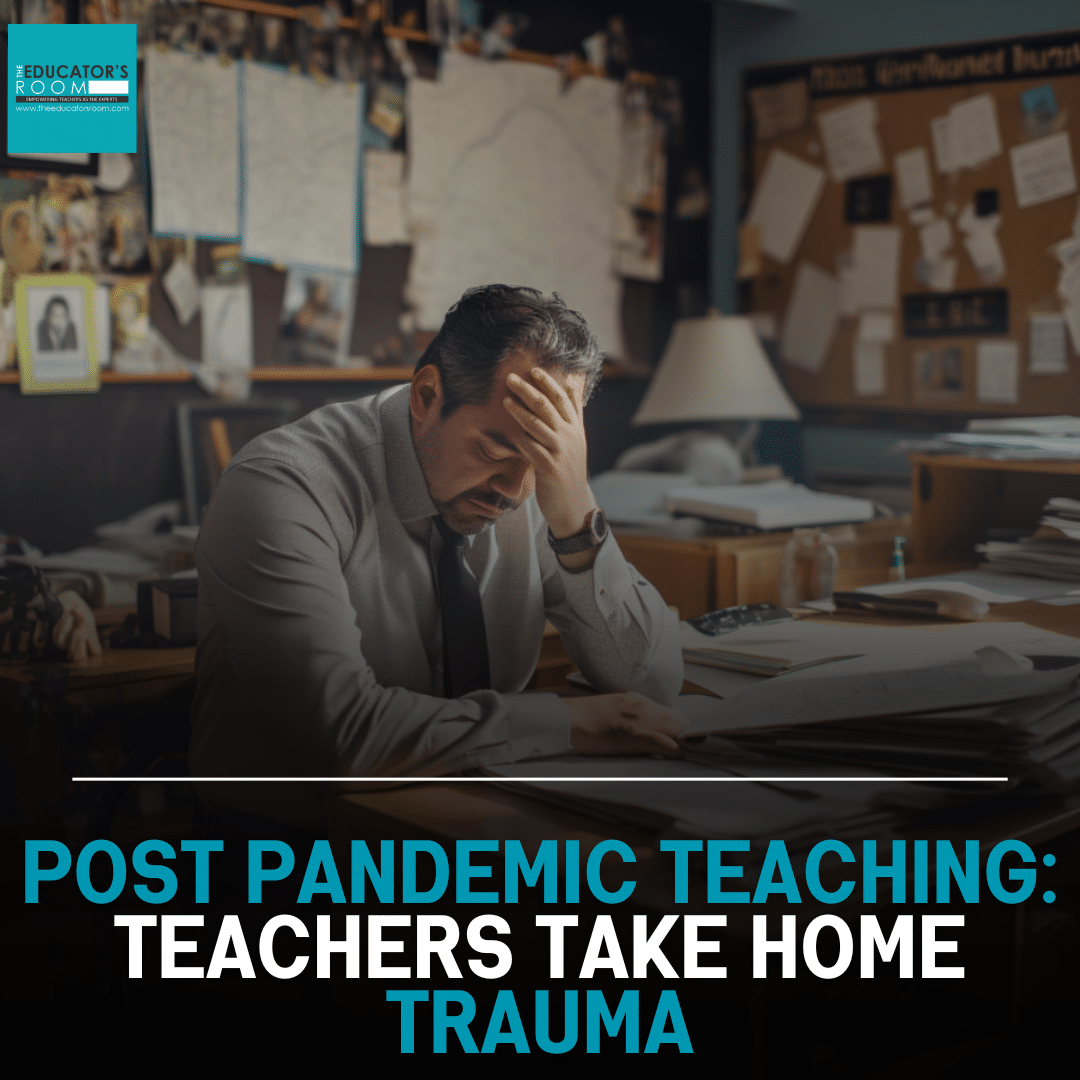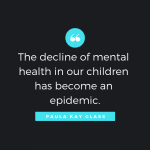Teachers can be traumatized, too.
And, I’m not talking about dealing with students who “misbehave” or give them a hard time, although those times can be tough.
I’m talking about the teachers who are in the trenches, educating the kids who carry heavy (and sometimes invisible) trauma on their shoulders on a daily basis.
Our students come to school abused, hungry, and depressed, among a plethora of other things. They have to manage their social relationships and are expected to perform in school.
You can call it whatever you want: compassion fatigue, secondary traumatic stress, or just the daily ins and outs of being a teacher in this day and age.
I speak from personal experience. I have taught and cared for students with every trauma in the book.
Trauma in our Schools
Too many to count had fathers or male figures who were incarcerated. Others did not have enough to eat on a daily basis or were contemplating suicide. Some were without someplace to call home for extended periods of time. Others were the eldest of multiple children, forced to care for their younger siblings due to parent neglect or absenteeism.
I’ve had students who’ve run away, ones who have been arrested, ones who went missing, and ones who were murdered. Some events happen during the time they are directly under my wing, and others occur a few years later. Regardless of timing, it always stings.
But no matter what, I still go to school every day with the mentality that I must do better for my kids. And I take the trauma home without even realizing it. It lives with me to this day.
We’ve all been there.
It’s hard to find a teacher who has not experienced some sort of trauma in their classrooms, especially those who work in underprivileged or economically disadvantaged areas.
Take these two experiences for example:
Scenario 1: A student comes into your class after a traumatic night at home and immediately is triggered by something said in class. They throw a desk and go into a full-blown meltdown. As a teacher, you move everyone away, call for help, and eventually get the situation under control. You did your job: you protected your kids and helped them cope with the incident. But, for the rest of the day, your heart is racing. Loud noises make you jump. By the time you get home, you are physically and mentally exhausted.
Scenario 2: First thing in the morning, the counselor asks to meet with you and informs you about an incident involving one of your students: This student’s father was arrested last night, and the student witnessed the entire event. She’s a top performer, is a leader to her peers, and almost always has a positive attitude. She comes in that morning and is quiet and withdrawn. This continues throughout the week, and you worry about her ability to cope with what’s happening at home.
Both scenarios are traumatic to teachers. Yes, we experience first-hand trauma that originates from dealing with disrespectful or dangerous situations in school. But then we have secondary trauma, which comes from teaching others impacted by trauma. We often don’t realize it’s there, and its impact leaves shockwaves in the lives of staff and faculty.
Trauma (albeit pervasive) is a sly foe, and sometimes, we forget it’s even there, lurking in every classroom.
Let’s define STS or Secondary Traumatic Stress:
According to Christian-Brandt, Sandacrose, and Barnett in a 2020 research article,
“The notion that “there is a cost to caring” (Figley, 2013, p.1) underlies the phenomenon of secondary traumatic stress (STS). STS is defined by stress reactions or symptoms that mirror Post-Traumatic Stress Disorder (PTSD) and may be experienced by teachers or other helping professionals who hear the stories of others affected by trauma (Caringi et al., 2015; Hydon et al., 2015; Stamm, 2010). STS has been conceptualized as a type of burnout by some (Figley, 2013), while others have characterized STS as one aspect of “compassion fatigue,” burnout being the other aspect (Stamm, 2010).”
Teachers who experience STS can feel helpless, overwhelmed, angry, and stressed. Those with compassion fatigue often feel hopeless, empty, and isolated. At different times in my career, I have felt all of these things, some more than others and some all at once. I implore you as a teacher to think about how and why you have felt these things during your career. It’s important to note that you are not alone.
I could list all the things that have been traumatic for me as a teacher, but why? It’s more important to figure out how to deal with this so that we can keep being passionate about our work.
I often thought of quitting. Then, something wonderful would happen–an old student would reach out, or I’d make a breakthrough with someone–and I’d be able to make it another day.
So what are the choices of a teacher? Do we teach these children by creating caring communities in our classrooms? Do we become a mother/father figure to them when they need it? Do we try to be their safe space? All the while knowing that doing these things will make us susceptible to developing our own trauma or compassion fatigue. Do we risk our mental health for our careers and the well-being of our students?
Can we blame the teachers who “turn it off” and who act indifferent and cold while still doing their job?
—Or—
Do we close ourselves off? Do we simply keep our student-teacher relationships surface-level?
For the most part, I keep a very professional relationship with both my colleagues and students, as I believe all teachers should. But I care deeply and tend to be a “Mother Bear” for my kids. I realize now that I was defending them. I hold their trauma in my heart and protect them from the judgment of others.
This is what happens when we become their “safe space.”
Final Thoughts
I won’t be cliche and say, “take days for self-care.” I’m not going to say, “don’t care.” We need districts that value teachers and want to take care of us. We need administrators who listen to our needs and don’t forget what it’s like to be in the classroom. We need counseling for ourselves and greater mental health benefits.
But most of all, we must keep going for the students and our passion.
As a veteran teacher and someone who has “been through it all,” my coworker asked me what advice I would give to a person dealing with trauma.
I had to think for a minute. I came up with this:
Try not to take things personally. Or at least try not to take them home. Your students are not their behavior. We, as teachers, can only do so much.
Create those boundaries.
And, most importantly, don’t let their actions change the teacher you are.

Julie Krzesinski is a middle and high school ELA Teacher and currently lives in Chester County, Pennsylvania. She is a leader and expert in classroom management, relationship building, and virtual learning. Throughout her career, she focused on creating strong connections with both her students and colleagues and building solid learning communities within the classroom.







